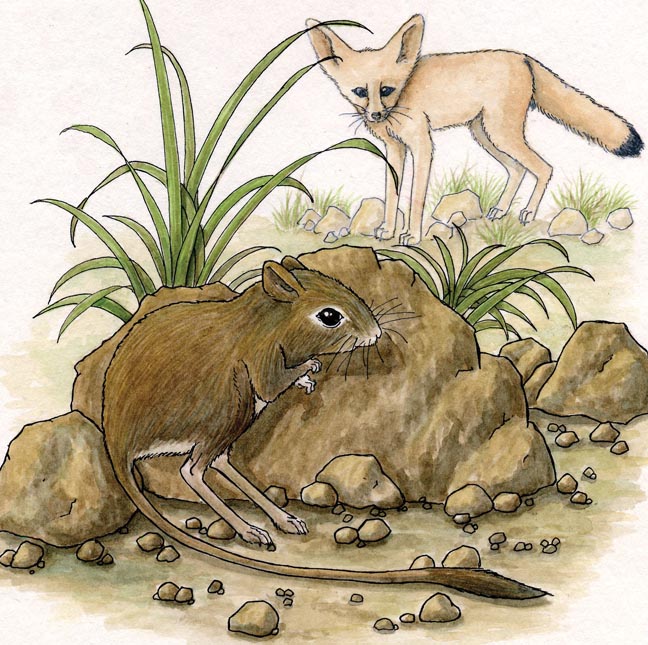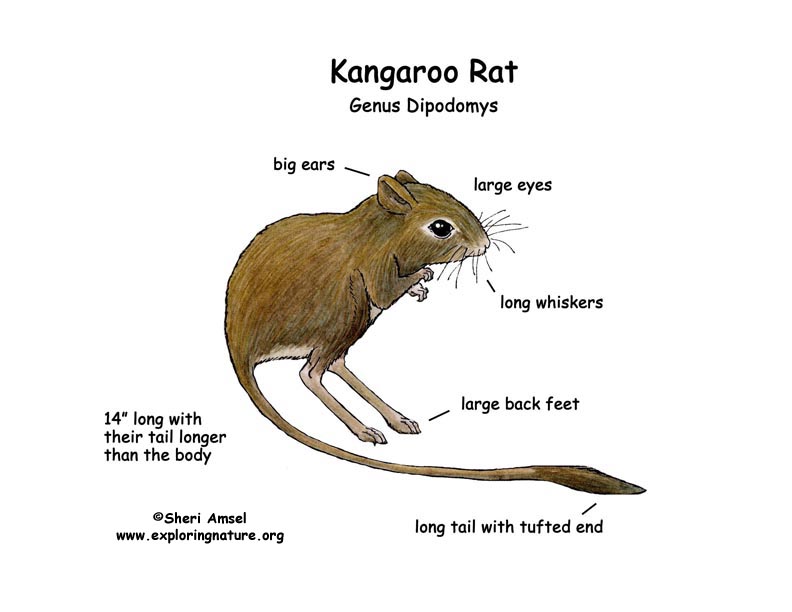

They are found in dry areas of the western and southwestern U.S.
They live in deserts and rocky scrublands.
They can be up to 14 inches long (35cm), with their tail longer than their body. They are pale tan to blend in with rocks and sand. Their long tail, used for balance while hopping, ends in a tuft of hair. They have large back feet, also to aid in hopping.
Because they live in such a dry habitat they don’t sweat or pant to keep cool off, as this would waste water.
They eat seeds and grasses.
Desert predators include rattlesnake, coyote, fox, and hawk.
Females are pregnant for 32 days (gestation) and have about 3 young per litter. They have 2-3 litters per year.
They can live up to 5 years but often only survive 1 season in the wild.
When you research information you must cite the reference. Citing for websites is different from citing from books, magazines and periodicals. The style of citing shown here is from the MLA Style Citations (Modern Language Association).
When citing a WEBSITE the general format is as follows.
Author Last Name, First Name(s). "Title: Subtitle of Part of Web Page, if appropriate." Title: Subtitle: Section of Page if appropriate. Sponsoring/Publishing Agency, If Given. Additional significant descriptive information. Date of Electronic Publication or other Date, such as Last Updated. Day Month Year of access < URL >.
Amsel, Sheri. "Kangaroo Rat" Exploring Nature Educational Resource ©2005-2024. December 14, 2024
< http://mail.exploringnature.org/db/view/426 >

